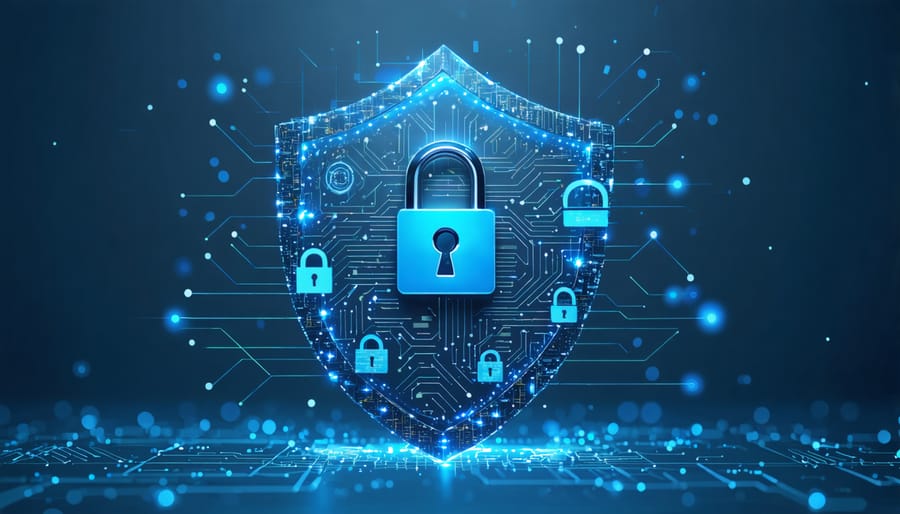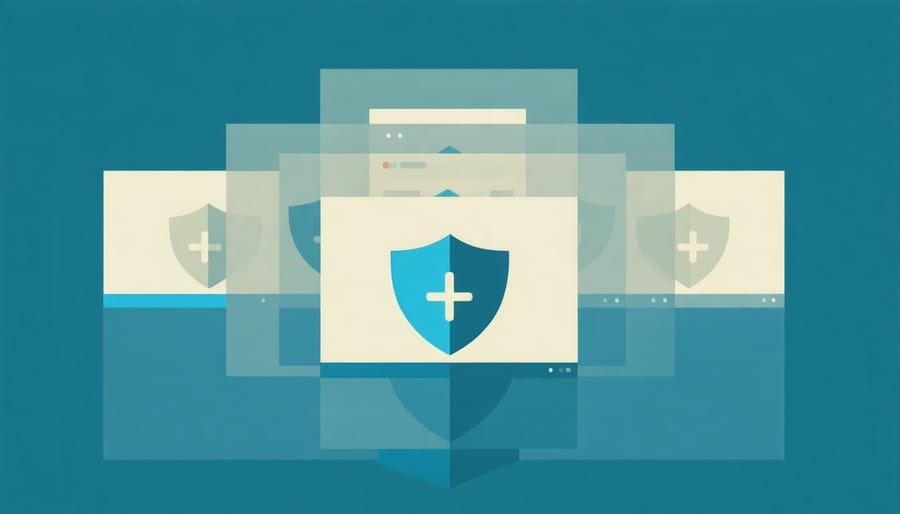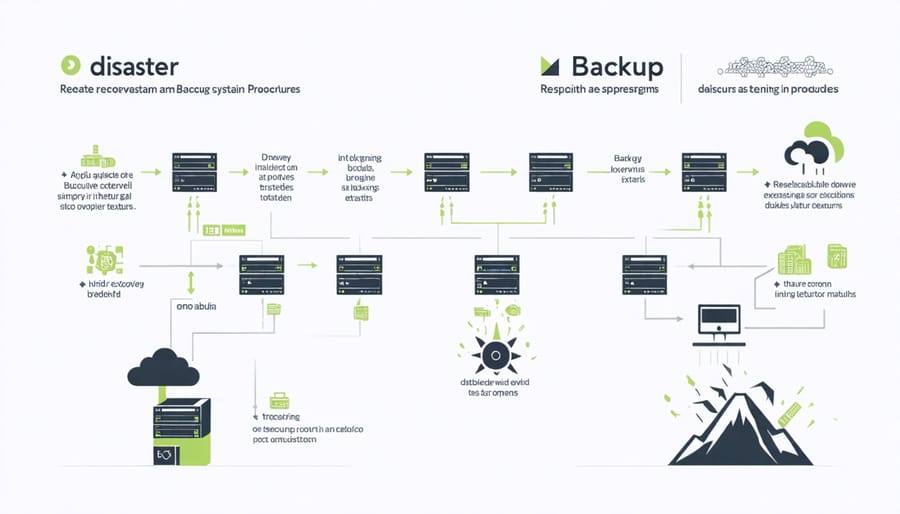
In today’s digital landscape, cybersecurity isn’t just an IT concern—it’s a business imperative that directly impacts your bottom line. Recent data shows that 43% of cyber attacks target small businesses, with an average breach costing $200,000—enough to permanently close many companies’ doors. From ransomware attacks targeting customer databases to sophisticated phishing schemes compromising financial data, the threats to furniture businesses are both real and growing.
But here’s the good news: implementing robust cybersecurity measures doesn’t require a fortune or a dedicated IT department. By focusing on essential security protocols, employee training, and data protection strategies, furniture businesses can significantly reduce their vulnerability to cyber threats while maintaining efficient operations and customer trust.
This comprehensive guide breaks down the most critical cybersecurity measures your furniture business needs to implement today, with practical steps that balance security with operational efficiency. Whether you’re a small boutique retailer or a large warehouse operation, these strategies will help protect your digital assets, customer information, and business reputation.

Protecting your payment gateway is crucial for maintaining customer trust and business security. Implementing secure payment processing starts with choosing a PCI DSS-compliant payment processor and regularly updating your security protocols.
Essential steps include encrypting all payment data, using tokenization for transactions, and implementing multi-factor authentication for payment system access. Regular security scans and vulnerability assessments help identify potential weak points before they can be exploited.
Keep your payment software and systems updated with the latest security patches. Monitor transactions for suspicious activity and set up automated alerts for unusual patterns. Train your staff on proper payment handling procedures and ensure they understand the importance of maintaining customer payment data confidentiality.
Regularly audit your payment processes and maintain detailed logs of all transactions. Consider working with a qualified security assessor to ensure ongoing PCI compliance and implement additional security measures as needed. Remember, protecting payment information isn’t just about compliance – it’s about maintaining customer trust and your business’s reputation.
Your website’s security forms the foundation of your online furniture business’s trustworthiness. Start by implementing an SSL certificate to encrypt all data transmissions between your site and visitors. This not only protects sensitive information but also boosts your search rankings and customer confidence. While exploring e-commerce optimization strategies, ensure your hosting provider offers robust security features, including regular backups and malware scanning.
Keep your website’s content management system, plugins, and themes updated to patch security vulnerabilities. Schedule automatic updates when possible, but always test them in a staging environment first to avoid disrupting your furniture showcase pages. Implement strong password policies and two-factor authentication for all admin accounts.
Regular security audits help identify potential weaknesses before they can be exploited. Monitor your website traffic for suspicious activities and maintain detailed logs of all security-related events. Consider using a web application firewall (WAF) to filter out malicious traffic and protect against common cyber threats that could compromise your furniture business’s online presence.
In today’s digital marketplace, protecting customer data is paramount for furniture businesses. Implementing robust encryption practices aligned with FTC-approved security protocols helps safeguard sensitive information throughout your operations.
Start by encrypting all customer payment information using industry-standard SSL/TLS protocols on your e-commerce platform. This ensures secure transactions and builds trust with your customers. Install reputable encryption software that automatically encrypts data both in transit and at rest.
For customer databases, implement end-to-end encryption for storing personal information, including names, addresses, and purchase history. Use strong encryption keys and regularly update them to maintain security integrity. Consider using a trusted third-party payment processor to handle sensitive financial data, reducing your liability and ensuring compliance with industry standards.
When backing up data, ensure all copies are encrypted before being stored, whether on-site or in the cloud. Create clear protocols for handling encrypted data, including secure key management and access controls. Train your staff on proper encryption practices and establish guidelines for securely sharing encrypted information when necessary.
Remember to regularly audit your encryption measures and update them as new security standards emerge, keeping your customers’ data protected while maintaining efficient business operations.
Customer data is the lifeblood of your furniture business, and protecting it should be a top priority. Start by implementing a secure, encrypted database system that safeguards sensitive information like credit card details, shipping addresses, and purchase history. Consider using industry-standard encryption protocols and regularly updating your security measures to stay ahead of potential threats.
Create a clear data retention policy that outlines how long you’ll store customer information and establish protocols for secure data disposal when it’s no longer needed. Implement role-based access control, ensuring employees can only access the customer data necessary for their specific job functions.
Regular backups are essential – maintain multiple copies of your customer database, with at least one stored off-site or in a secure cloud environment. This protects against both data loss and ransomware attacks.
Train your staff on proper data handling procedures and the importance of customer privacy. This includes using strong passwords, avoiding unauthorized data sharing, and recognizing potential security threats like phishing attempts.
Consider investing in automated monitoring systems that can alert you to unusual database activity or potential breaches. Finally, ensure your customer database management practices comply with relevant data protection regulations and industry standards.

Implementing robust password management practices is crucial for protecting your business assets and customer data. Start by requiring strong passwords that combine uppercase and lowercase letters, numbers, and special characters, with a minimum length of 12 characters. Avoid using easily guessable information like company names, birthdates, or common words.
Establish a policy requiring password changes every 90 days and implement multi-factor authentication for all business accounts, especially those handling sensitive customer information or financial data. Consider using a reputable password management tool to securely store and generate complex passwords for your team.
Each employee should have unique login credentials, and access privileges should be regularly reviewed and updated based on job roles. When staff members leave the company, immediately deactivate their accounts and require password changes for shared systems they had access to.
Discourage password sharing and the use of the same password across multiple accounts. Train your team to recognize the importance of password security and provide clear guidelines for creating and maintaining secure passwords. Regular security audits can help ensure compliance with these password policies across your organization.
Train your staff to recognize and avoid phishing attempts by implementing regular cybersecurity awareness sessions. Teach them to verify sender email addresses carefully, especially for messages requesting sensitive information or financial transactions. Encourage employees to hover over links before clicking to preview the actual URL and watch for subtle misspellings in domain names.
Establish clear protocols for handling suspicious emails, including immediate reporting to IT personnel. Create a system where staff must verbally confirm any unusual requests for wire transfers or customer data changes, even if they appear to come from management. This “two-factor verification” approach can prevent costly mistakes.
Use real-world examples in your training sessions to demonstrate common phishing tactics, such as urgency-based messaging or impersonation of trusted vendors. Consider conducting simulated phishing tests to identify areas where additional training may be needed.
Remind staff that legitimate businesses never request passwords or sensitive information via email. Create a quick reference guide for employees to consult when in doubt, and maintain an open-door policy for questions about suspicious communications. Regular refresher training helps keep security awareness high and reduces the risk of successful phishing attacks.

Implementing a robust data backup system is crucial for protecting your business’s vital information. Set up automated daily backups of all customer data, financial records, and business documents to secure cloud storage platforms and local external drives. Follow the 3-2-1 backup rule: maintain three copies of your data, store them on two different types of media, and keep one copy off-site.
Consider using incremental backup solutions that only save changes made since the last backup, saving time and storage space. Test your backup systems regularly by performing data recovery drills to ensure they work effectively when needed. Document your backup procedures and train staff on proper data handling protocols.
For enhanced security, encrypt your backup files and store them in different physical locations. This approach protects against both cyber threats and physical disasters like fires or floods. Review and update your backup strategy quarterly to accommodate growing data needs and emerging security challenges.
A robust recovery response plan is your business’s lifeline when security incidents occur. Start by immediately isolating affected systems to prevent further damage. Document all incident details, including time, nature of the breach, and affected areas. Next, activate your backup systems while investigating the breach source.
Contact your IT security team or managed service provider immediately. They should assess the situation and implement necessary containment measures. Simultaneously, notify relevant stakeholders, including employees, customers, and, if required by law, regulatory authorities.
Once the immediate threat is contained, begin system restoration from clean backups. Conduct a thorough post-incident analysis to identify vulnerabilities and update security measures accordingly. Create detailed reports of the incident and response effectiveness.
Finally, review and update your recovery procedures based on lessons learned. Regular drills and updates to your response plan ensure your team remains prepared for future incidents.
In today’s digital landscape, maintaining robust cybersecurity measures isn’t just an option – it’s a business imperative. By implementing comprehensive security protocols, regularly updating systems, and fostering a security-conscious culture among employees, businesses can significantly reduce their vulnerability to cyber threats. Regular security audits, employee training sessions, and staying informed about emerging threats should become integral parts of your business operations.
Remember that cybersecurity is an ongoing process, not a one-time implementation. As threats evolve, so should your security measures. Invest in reliable antivirus software, maintain strong password policies, and regularly back up your data. Consider working with cybersecurity professionals to assess your specific risks and develop tailored solutions.
Most importantly, make cybersecurity a priority at every level of your organization. From the CEO to front-line employees, everyone plays a crucial role in maintaining digital safety. By staying vigilant and proactive in your security measures, you can protect your business assets, maintain customer trust, and ensure long-term success in an increasingly connected world.